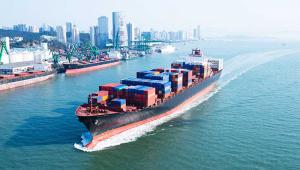By Nick Mann | 23 May 2012
Growth slowed to 8.2% in the East Asia and Pacific region last year, but it is still the strongest performer among developing regions, the World Bank said today.
In its latest East Asia and Pacific economic update, the Bank reported a ‘sharp decline’ in the region’s growth from the near-10% gross domestic product growth recorded in 2010. Excluding China, growth fell from 7% to 4.3%.
Last year’s slowdown was largely attributed to lower-than-expected growth in manufacturing exports and supply disruptions caused by the earthquake and tsunami in Japan and severe flooding in Thailand, Laos and Cambodia.
This was largely compensated for by domestic demand and investment, as well as a loosening in monetary policy by some countries in the region.
The World Bank noted that the downturn returned the pace of growth to pre-crisis trends after a brief ‘rebound’ in 2010 in the wake of the global economic and financial crisis.
This year growth is expected to slow further to 7.6%, largely as a result of the largest economy – China – pulling down the regional average. Excluding China, growth is expected to increase to 5.2% as Thailand returns to normal levels of production.
The World Bank chief economist for the East Asia and Pacific Region, Bert Hofman, said: ‘Most East Asian economies are well positioned to weather renewed volatility. Domestic demand has proved resilient to shocks. Many countries run current account surpluses and hold high levels of international reserves. Banking systems are generally well capitalised.
He warned, however, that the region’s links in trade and finance with Europe meant the eurozone crisis still had the potential to affect East Asia and Pacific’s performance. The European Union, along with the US and Japan, accounts for more than 40% of the region’s exports, and European banks provide a third of Asia’s trade and project finance.
‘Aserious disruption in the EU would also have knock-on effects on East Asia’s exports and growth by lowering growth in other regions, particularly Eastern Europe,’ the report said.
In light of weak external demand, the World Bank advocated further rebalancing of the region’s economy to rely more on domestic demand to maintain high growth.
World Bank economist Bryce Quillin said: ‘Some countries will need to stimulate household consumption. In others, enhanced investment, particularly in infrastructure, offers the potential to sustain growth provided this does not exacerbate domestic demand pressures.
‘With a changing financial sector in the aftermath of the financial crisis, new ways to finance higher levels of infrastructure investment need to be developed. Governments would need to focus on accelerating the preparation of infrastructure projects.’













